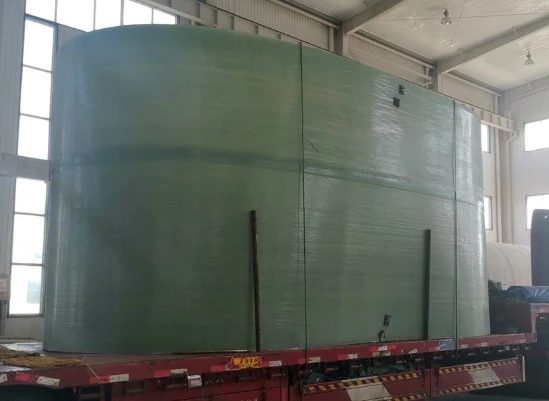
-
 Afrikaans
Afrikaans -
 Albanian
Albanian -
 Amharic
Amharic -
 Arabic
Arabic -
 Armenian
Armenian -
 Azerbaijani
Azerbaijani -
 Basque
Basque -
 Belarusian
Belarusian -
 Bengali
Bengali -
 Bosnian
Bosnian -
 Bulgarian
Bulgarian -
 Catalan
Catalan -
 Cebuano
Cebuano -
 China
China -
 China (Taiwan)
China (Taiwan) -
 Corsican
Corsican -
 Croatian
Croatian -
 Czech
Czech -
 Danish
Danish -
 Dutch
Dutch -
 English
English -
 Esperanto
Esperanto -
 Estonian
Estonian -
 Finnish
Finnish -
 French
French -
 Frisian
Frisian -
 Galician
Galician -
 Georgian
Georgian -
 German
German -
 Greek
Greek -
 Gujarati
Gujarati -
 Haitian Creole
Haitian Creole -
 hausa
hausa -
 hawaiian
hawaiian -
 Hebrew
Hebrew -
 Hindi
Hindi -
 Miao
Miao -
 Hungarian
Hungarian -
 Icelandic
Icelandic -
 igbo
igbo -
 Indonesian
Indonesian -
 irish
irish -
 Italian
Italian -
 Japanese
Japanese -
 Javanese
Javanese -
 Kannada
Kannada -
 kazakh
kazakh -
 Khmer
Khmer -
 Rwandese
Rwandese -
 Korean
Korean -
 Kurdish
Kurdish -
 Kyrgyz
Kyrgyz -
 Lao
Lao -
 Latin
Latin -
 Latvian
Latvian -
 Lithuanian
Lithuanian -
 Luxembourgish
Luxembourgish -
 Macedonian
Macedonian -
 Malgashi
Malgashi -
 Malay
Malay -
 Malayalam
Malayalam -
 Maltese
Maltese -
 Maori
Maori -
 Marathi
Marathi -
 Mongolian
Mongolian -
 Myanmar
Myanmar -
 Nepali
Nepali -
 Norwegian
Norwegian -
 Norwegian
Norwegian -
 Occitan
Occitan -
 Pashto
Pashto -
 Persian
Persian -
 Polish
Polish -
 Portuguese
Portuguese -
 Punjabi
Punjabi -
 Romanian
Romanian -
 Russian
Russian -
 Samoan
Samoan -
 Scottish Gaelic
Scottish Gaelic -
 Serbian
Serbian -
 Sesotho
Sesotho -
 Shona
Shona -
 Sindhi
Sindhi -
 Sinhala
Sinhala -
 Slovak
Slovak -
 Slovenian
Slovenian -
 Somali
Somali -
 Spanish
Spanish -
 Sundanese
Sundanese -
 Swahili
Swahili -
 Swedish
Swedish -
 Tagalog
Tagalog -
 Tajik
Tajik -
 Tamil
Tamil -
 Tatar
Tatar -
 Telugu
Telugu -
 Thai
Thai -
 Turkish
Turkish -
 Turkmen
Turkmen -
 Ukrainian
Ukrainian -
 Urdu
Urdu -
 Uighur
Uighur -
 Uzbek
Uzbek -
 Vietnamese
Vietnamese -
 Welsh
Welsh -
 Bantu
Bantu -
 Yiddish
Yiddish -
 Yoruba
Yoruba -
 Zulu
Zulu
Durable Fiberglass Fuel & Roof Tanks Corrosion-Resistant Solutions
- Introduction to Fiberglass Tank Solutions
- Technical Advantages Over Traditional Materials
- Performance Comparison: Leading Manufacturers
- Customization Options for Diverse Applications
- Case Study: Industrial Roof Tank Installation
- Maintenance and Longevity Insights
- Why Tank Fiberglass Dominates Modern Infrastructure

(tank fiberglass)
Innovation Meets Durability: Tank Fiberglass Solutions
Fiberglass-reinforced polymer (FRP) tanks have revolutionized liquid storage across industries, with the global FRP tank market projected to reach $4.8 billion by 2028 (CAGR 5.2%). Unlike conventional steel or concrete alternatives, tank fiberglass
systems offer unmatched corrosion resistance while weighing 30-40% less. This section examines how these composite structures address modern challenges in fuel storage, water treatment, and chemical processing.
Technical Superiority in Material Engineering
Key performance metrics establish fiberglass fuel tanks as superior solutions:
- ▶︎ 0.0005 in/year corrosion rate vs. steel's 0.02 in/year
- ▶︎ 180°F continuous service temperature capacity
- ▶︎ 10:1 strength-to-weight ratio advantage over aluminum
Advanced resin formulations now enable 20-year warranties against structural failure, with optional FDA-compliant liners for food-grade applications.
Market Leader Comparison Analysis
| Brand | Wall Thickness | Max Capacity | Price/Unit |
|---|---|---|---|
| FiberTech Pro | 0.35" | 15,000 gal | $8,200 |
| PolyGuardian | 0.28" | 12,500 gal | $7,100 |
| CompositeMaster | 0.42" | 25,000 gal | $11,400 |
Application-Specific Engineering Solutions
Modern roof tank fiberglass installations demonstrate material adaptability:
- 1. Chemical Plants: Dual-layer construction with vinyl ester resin
- 2. Automotive Fuel: UL-142 certified tanks with impact modifiers
- 3. Water Treatment: NSF/ANSI 61-approved potable water systems
Industrial Implementation Case Review
A 2023 installation at Phoenix Manufacturing achieved:
- ✓ 40% faster installation vs. steel tanks
- ✓ $12,000/year savings in maintenance
- ✓ 99.8% purity retention in solvent storage
Sustained Performance Through Decades
Accelerated aging tests show fiberglass fuel tanks maintain:
- • 95% tensile strength after 15 years
- • <1% linear expansion from -40°F to 160°F
- • Zero reported ground contamination incidents
Tank Fiberglass: The Future-Proof Choice
With 78% of industrial engineers now specifying FRP for new installations, tank fiberglass technology continues displacing legacy materials. Its combination of 50-year service life projections and 100% recyclability positions it as the sustainable solution for next-generation infrastructure projects.

(tank fiberglass)
FAQS on tank fiberglass
Q: What are the benefits of a fiberglass fuel tank?
A: Fiberglass fuel tanks resist corrosion, are lightweight, and handle harsh chemicals, making them ideal for marine and industrial use. Their durability reduces long-term maintenance costs.
Q: How to install a roof tank fiberglass properly?
A: Ensure the roof structure can support the tank’s weight, use UV-resistant coatings, and secure it with non-abrasive fasteners. Professional installation is recommended for safety.
Q: Can a tank fiberglass withstand extreme temperatures?
A: Yes, fiberglass tanks tolerate a wide temperature range due to their thermal stability. However, prolonged exposure to extreme heat may require additional insulation.
Q: Are fiberglass fuel tanks safe for storing drinking water?
A: Yes, if certified for potable water use. Fiberglass tanks must use NSF-approved resins and coatings to ensure water safety and prevent contamination.
Q: What maintenance does a roof tank fiberglass require?
A: Inspect for cracks or UV damage annually, clean debris, and check seals. Repaint with UV-protective coatings if fading occurs to extend lifespan.
Latest news
-
Durable FRP Chimney Construction & Installation for Industrial UseNewsMay.10,2025
-
Durable Fiberglass Fuel & Roof Tanks Corrosion-Resistant SolutionsNewsMay.10,2025
-
High-Efficiency PDC Anchor Drill Bits - Durable High-Perf Drilling SolutionsNewsMay.10,2025
-
FRP/GRP Solutions for Thermal & Nuclear Power Plants Durable MaterialsNewsMay.10,2025
-
Custom Fiberglass Fittings Durable & Corrosion-Resistant SolutionsNewsMay.10,2025
-
High-Temp Resistant Fiberglass Products for Steel Smelting Plants FRP/GRP SolutionsNewsMay.10,2025









